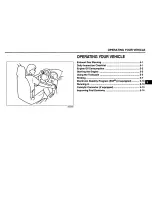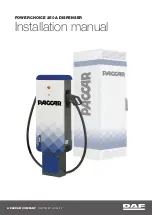
Towing
It is best to tow the car no farther
than 80 km (50 miles), and keep
the speed below 35 mph (55
km/h).
If your car is equipped with a front
spoiler, remove it before towing so
it is not damaged.
Taking Care of the Unexpected
If your car needs to be towed, call a
professional towing service or, if you
belong to one, an organization that
provides roadside assistance. Never
tow your car behind another car with
just a rope or chain. It is very
dangerous.
Emergency Towing
There are three popular methods of
towing a car:
Flat-bed Equipment
— The operator
loads your car on the back of a truck.
This is the best way of trans-
porting your Honda.
Wheel Lift Equipment
— The tow
truck uses two pivoting arms that go
under the tires (front or rear) and lift
them off the ground. The other two
tires remain on the ground.
Sling-type Equipment
— The tow
truck uses metal cables with hooks
on the ends. These hooks go around
parts of the frame or suspension and
the cables lift that end of the car off
the ground. Your car's suspension
and body can be seriously damaged
if this method of towing is attempted.
If your Honda cannot be transported
by flat-bed, it should be towed with
the front wheels off the ground. If
due to damage, your car must be
towed with the front wheels on the
ground, do the following:
5-speed Manual Transmission and
Continuously Variable Transmission
(CVT)
Release the parking brake.
Shift the transmission to Neutral.
Automatic Transmission:
Release the parking brake.
Start the engine.
Shift to D4. then to N.
Turn off the engine.
Improper towing preparation will
damage the transmission. Follow the
above procedure exactly. IF you cannot
shift the transmission or start the
engine (automatic transmission), your
car must be transported on a flat-bed.
Trying to lift or tow your car by the
bumpers will cause serious damage.
The bumpers are not designed to
support the car's weight.
NOTICE
NOTICE
Main Menu
Table of Contents
▲
▼
















































